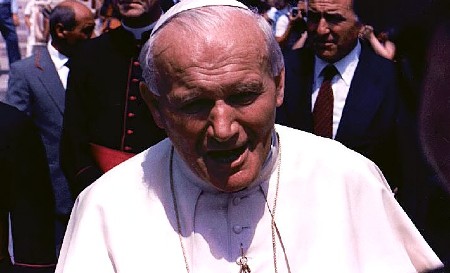We ask you, humbly: don't scroll away.
Hi readers, it seems you use Catholic Online a lot; that's great! It's a little awkward to ask, but we need your help. If you have already donated, we sincerely thank you. We're not salespeople, but we depend on donations averaging $14.76 and fewer than 1% of readers give. If you donate just $5.00, the price of your coffee, Catholic Online School could keep thriving. Thank you.Help Now >
Pharao
FREE Catholic Classes
(Prah, Par‘o, or, after a vowel, Phar‘o ; Greek Pharaó ; Latin Pharao).
The title given in Sacred Scripture to the ancient kings of Egypt. The term is derived from the Egyptian Per‘o, "great house", which originally designated the royal palace, but was gradually applied to the Government and then to the ruler himself, like the Vatican and the Quirinal, for instance, in modern times. At the period of the eighteenth dynasty (sixteenth to fourteenth cent. B. C. ) it is found in common use as a reverential designation of the king. About the beginning of the twenty-second dynasty (tenth to eighth cent. B. C. ), instead of being used alone as heretofore, it began to be added to the other titles before the king's name, and from the twenty-fifth dynasty (eighth to seventh cent. B. C. ) it was, at least in ordinary usage, the only title prefixed to the royal appellative. Meanwhile the old custom of referring to the sovereign simply as Per‘o still obtained in narratives. The Biblical use of the term reflects Egyptian usage with fair accuracy. The early kings are always mentioned under the general title Pharao, or Pharao the King of Egypt ; but personal names begin to appear with the twenty-second dynasty, though the older designation is still used, especially when contemporary rulers are spoken of. The absence of proper names in the first books of the Bible is no indication of the late date of their composition and of writer's vague knowledge of Egyptian history, rather the contrary. The same is true of the use of the title Pharao for kings earlier than the eighteenth dynasty, which is quite in keeping with Egyptian usage at the time of the nineteenth dynasty.
The first king mentioned by name is Sesac (Sheshonk I), the founder of the twenty-second dynasty and contemporary of Roboam and Jeroboam ( 1 Kings 11:40 ; 2 Chronicles 12:2 sqq. ). Pharao is not prefixed to his name probably because the Hebrews had not yet become familiarized with the new style. The next, Sua, or So, ally of Osee, King of Israel ( 2 Kings 17:4 ), is commonly identified with Shabaka, the founder of the twenty-fifth dynasty, but he was probably an otherwise unknown local dynast prior to Shabaka's reign. Winckler's opinion that he was a ruler of Musri in North Arabia, though accepted by many, is without sufficient foundation. Tharaca, who was the opponent of Sennacherib, is called King of Ethiopia ( 2 Kings 19:9 ; Isaiah 37:9 ), and hence is not given the title Pharao which he bears in Egyptian documents. Nechao, who defeated Josias ( 2 Kings 23:29 sqq. ; 2 Chronicles 35:20 sqq. ), and Ephree, or Hophra, the contemporary of Sedecius ( Jeremiah 44:30 ), are styled Pharao Nechao and Pharao Ephree, according to the then Egyptian usage.
Unnamed Pharaos of the Bible
The uncertainties attaching to ancient chronology make it impossible to determine the identity of the Pharao who ruled over Egypt when Abraham arrived in the country. The Massoretic text gives 1125 years between Abraham's migration to Chanaan and the building of the temple, whereas the Septuagint allows 870 (see C HRONOLOGY ). As the building is placed about 1010 B. C. by some scholars, and about 969 B. C. by others, the date of Abraham's migration would be 2135 or 2094 B. C. for the Massoretic text, and 1880 or 1839 B. C. for the Septuagint. Ancient Egyptian chronology is as uncertain as that of the Bible . If Meyer's dates, adopted in the article E GYPT , are correct, Abraham's journey to Egypt would have to be referred to the reign of one of the Mentuhoteps of the eleventh dynasty, or to that of either Usertesen (Sesotris) III, or Amenemhet III of the twelfth.
(2) The Pharao of Joseph
It is generally admitted that Joseph held office under one of the shepherd, or Hyksos, kings, who ruled in Egypt between the twelfth and eighteenth dynasties, and were finally expelled by Ahmose I shortly after 1580. The length of their rule is unknown, but probably it did not last much over a hundred years. Joseph's tenure of office would accordingly be placed in the seventeenth century B. C. If the Exodus took place at the beginning of the reign of Merneptah, i.e., about 1225, as most scholars now maintain, and the sojourn of the Israelites in Egypt lasted 430 years, as stated in the Massoretic text ( Exodus 12:40 ), the time would be about 1665. The names of four Hyksos kings are known to us from Egyptian monuments, a Khian and three Apophises. George Syncellus states that in his time (eighth cent. A. D. ) there was a general consensus that the Pharao of Joseph was Apophis, probably Apophis II, the most important of the three. This opinion is possibly true, but the history of the period is too obscure to allow a defininte statement.
We ask you, humbly: don't scroll away.
Hi readers, it seems you use Catholic Online a lot; that's great! It's a little awkward to ask, but we need your help. If you have already donated, we sincerely thank you. We're not salespeople, but we depend on donations averaging $14.76 and fewer than 1% of readers give. If you donate just $5.00, the price of your coffee, Catholic Online School could keep thriving. Thank you.Help Now >
(3) The Pharao of the Oppression and of the Exodus
See ISRAELITES.
(4) The other Pharaos
The Pharao with whom Adad sought refuge in the time of David ( 1 Kings 11:17 ) was a king of the twenty-first dynasty, either Paynozem or Amenemopet. Solomon's father-in-law ( 1 Kings 3:1 ) may have been Amenemopet, Siamon, or Pesibkhenno II. The Pharao mentioned in 2 Kings 18:21 and Isaiah 36:6 is by many thought to be Tharaca; but if the expedition of Sennacherib occurred in 701, as is generally held, there is little doubt that Shabaka, or possibly Shabataka, is the Pharao referred to. Tharaca came to the throne some years later, and the title King of Ethiopia ( 2 Kings 19:9 ; Isaiah 37:9 ) is given to him by anticipation. The unnamed Pharao of Jeremiah 25:19 , is probably Nechao, who is certainly meant in 46:17 and 47:1 ; elsewhere Ephree is intended. The latter is also the Pharao of Ezechiel.
We ask you, humbly: don't scroll away.
Hi readers, it seems you use Catholic Online a lot; that's great! It's a little awkward to ask, but we need your help. If you have already donated, we sincerely thank you. We're not salespeople, but we depend on donations averaging $14.76 and fewer than 1% of readers give. If you donate just $5.00, the price of your coffee, Catholic Online School could keep thriving. Thank you.Help Now >








 Daily Readings for Friday, April 26, 2024
Daily Readings for Friday, April 26, 2024 St. Cletus: Saint of the Day for Friday, April 26, 2024
St. Cletus: Saint of the Day for Friday, April 26, 2024 Prayer before the Closing of the Day: Prayer of the Day for Friday, April 26, 2024
Prayer before the Closing of the Day: Prayer of the Day for Friday, April 26, 2024

